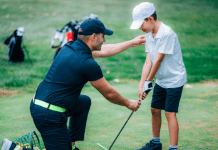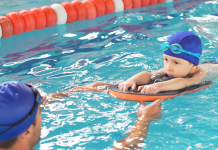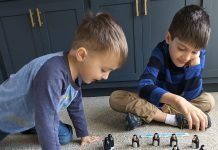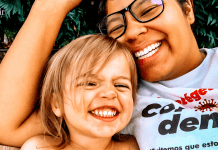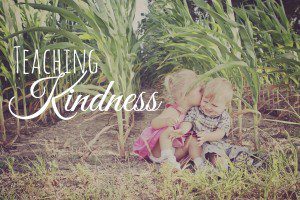 “Middle school is coming. And I’m seriously considering homeschooling to avoid the bullying,” Ashley said as we watched our two daughters playing in the sand with their younger siblings. “Middle school was horrible for me.”
“Middle school is coming. And I’m seriously considering homeschooling to avoid the bullying,” Ashley said as we watched our two daughters playing in the sand with their younger siblings. “Middle school was horrible for me.”
“Me too,” I said, remembering the social perils that even a school uniform couldn’t save me from. When our babies were small, we worried about sharing, not throwing sand at the other kids or splitting a treat when there are two children and one dessert. But as puberty sets in as young as 8-9 years old now in the U.S., my worries shift to the subtleties of rank, peers, acceptance and kindness.
In the last few days, Westridge Middle School in Shawnee Mission was brought to media attention for bullying reports. It’s just the latest addition to a long list of issues with bullying. I have faces in my mind of young teen clients in my office who are told online that they are ugly, fat, should kill themselves, should starve themselves, should this and that. It’s atrocious, and it’s unkind.
Even animals know how to be kind, so why does it seem so difficult sometimes for humans to be simply such? The 2014 Bullying Statistics are still unbelievable, considering the amount of media and administrative attention given to the bullying phenomenon. Social, emotional education is creeping into our schools. Superintendent Dr. Jim Hinsen of the Shawnee Mission School District added Second Step, a new socio-emotional curriculum, to the required “specials” my children attend (30 minutes a week), but I have to admit, I’m a little skeptical about how much emphasis is placed on the interpersonal skills it intends to teach when it competes with brand new iPads for all students (including my soon-to-be first grader) next year. Here’s what another local Mommy blogger thinks of those iPads. Dr. Hinsen, 30 minutes a week isn’t enough.
Test scores and minutes in class time seem to consume teachers’ attention because of the demands of policy makers. Teachers struggle with classroom behavior management because our kids yearn to jump, stretch, twirl, and talk when they are being prepped for achievement tests. Teaching kindness isn’t that hard though, and educators are already equipped with the information they need. Here’s how people learn: here, here, here, here, here. But guess what? It’s not their job. In fact, by the time a child reaches 5 years old, the patterns are strongly established for how humans interact with others. So what does that imply? Parents. Yep… it’s us.
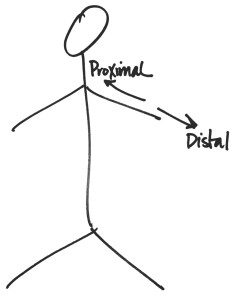 When I had my first baby, I thought I had all the time in the world before I had to confront the issues of social equity, fairness and grace. I thought I could focus on the diapers, the breastfeeding, the sleepless nights… they seemed like they’d last an eternity. But they were a blink. So let’s look at bullying scientifically. Let me give you the Cliff’s Notes version of what teachers and nurses already know about learning and the development of the cerebral cortex in the brain. Learning is proximal/distal. Don’t leave this page because we’re getting technical! Check out this anatomy blog for a good visual. Think directions: things that come toward you are proximal; things that go away from you are distal. We learn, therefore, by having things come toward us. Only then can we “send it out” from ourselves.
When I had my first baby, I thought I had all the time in the world before I had to confront the issues of social equity, fairness and grace. I thought I could focus on the diapers, the breastfeeding, the sleepless nights… they seemed like they’d last an eternity. But they were a blink. So let’s look at bullying scientifically. Let me give you the Cliff’s Notes version of what teachers and nurses already know about learning and the development of the cerebral cortex in the brain. Learning is proximal/distal. Don’t leave this page because we’re getting technical! Check out this anatomy blog for a good visual. Think directions: things that come toward you are proximal; things that go away from you are distal. We learn, therefore, by having things come toward us. Only then can we “send it out” from ourselves.
Kindness is proximal-distal.
A child cannot be kind if they do not have enough experiences of kindness being given freely to them. If you aren’t kind to yourself, you share your neurochemical stress with your child, and that will perpetuate a culture of disconnection and unkindness. I’m not suggesting that we never put the baby in a bouncy seat or let our preschoolers watch a TV show because we’re dooming them to disconnection and meanness. I’m just saying that the lessons of kindness come from parents and caregivers.
No matter the acceptance of all mothering approaches, there is a tipping point. There’s an unwritten boundary, and I’m writing it. During the first five years of life, our babies need sacrificial attention. Our babies must experience their caregivers being gracious with mistakes. We must be gracious with our parenting partners, and we must be gracious with ourselves when we make mistakes.
We must treat our children with the same respect we would give another adult in a social setting: respecting their little bodies, their little self-esteems, their desire for closeness or distance, their needs to make their own decisions. Bullying starts at home and spreads across the schoolyard. Bully Beans by Julia Cook teaches this to children wonderfully, but we can’t rely on a book. It has to be our children’s daily experience of us – we are the most prominent relationship they have for the first five years. Then we turn them loose to their peers to begin to develop the skills we have encoded in their minds.
Relational aggression is taught in early childhood. Relational aggression is behavior that is intended to hurt someone by harming his or her relationships with others (Crick & Grotpeter, 1995). When a child is sent away in a time out, the lesson is that when someone does not behave (think teen girl) as she ought, she is sent away (rejected, ostracized). If I grab a toy out of a toddler’s hands, that child learns that (1) that he can do the same when playing with others (this also applies to physical punishment), and (2) bad behaviors are measured by their subjective value to the child (such as in a behavioral economy like sticker charts and rewards/punishments), not to how it effects the people around him.
We must teach empathy by giving empathy. As adults, we must understand what empathy is and how to give it. We must receive it from other adults in order to have a reserve full enough to draw from. If you never received kindness yourself, you also need a proximal experience of kindness (kindness coming toward you), in order to provide a distal experience to the next generation (kindness going out from you).





